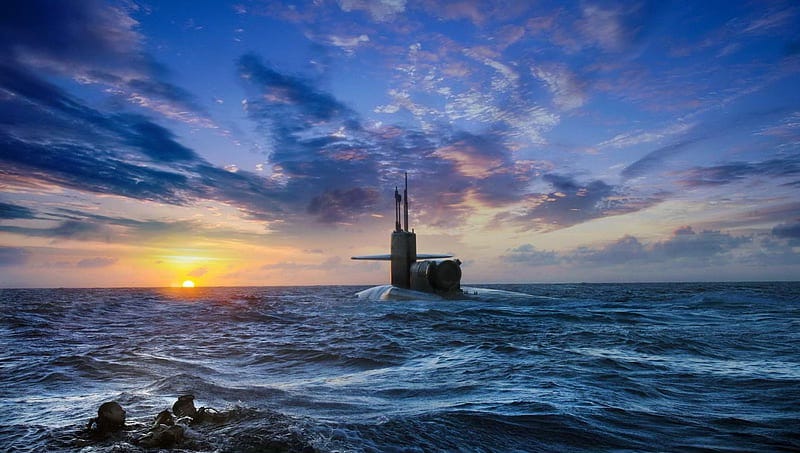In May 1968, the USS Scorpion vanished without a trace after a tour in the Mediterranean Sea, taking 99 crewmen with it. Its last known location covered a 20-mile radius, hidden beneath thousands of feet of turbulent ocean. The search seemed impossible - but Navy officer Dr. John Craven didn’t see impossibility. He saw opportunity. Rather than relying on a single expert, he built a diverse team of sailors, mathematicians, salvage operators, and submarine specialists. Each was asked to offer their best judgment across a range of scenarios.
By harnessing this “wisdom of crowds,” Craven’s team found the Scorpion within just 220 yards of where they predicted. It was a masterclass in what happens when you combine diverse minds around a common mission - and it’s a lesson every law enforcement and homeland security leader must understand today. Complex threats - terrorism, violent crime, transnational crime - are too big, too fast, and too interconnected for any one agency to handle alone.
Task Forces
The last few days marks the 45th anniversary of one of the most important innovations in counter terrorism: the creation of the first Joint Terrorism Task Force (JTTF), launched in 1980 by the NYPD and FBI. History would show that the JTTF model shattered the old way of operating in silos and proved that when agencies align their strengths, share intelligence, and move as one, they can outpace even the deadliest threats.
Serving on the Newark JTTF in the wake of 9/11 taught me lessons no classroom ever could. On the ground, I watched federal, state, and local agencies fuse perspectives, share capabilities, and outthink threats no single agency could handle alone. But the deeper leadership lesson was clear: no matter your badge or title, no one sees the full battlefield alone. Success demands dropping egos, trusting partners, and moving as a unified front. In critical moments, collaboration isn’t optional - it’s survival.
Interestingly, the JTTF model grew out of an earlier NYPD-FBI task force created to tackle a surge in bank robberies. But even before that, the 1970s saw the birth of federal drug task forces, leading to the DEA’s creation in 1973 and the launch of the Organized Crime Drug Enforcement Task Forces (OCDETF) by 1982. Around the same time, ATF formed its first task force in Philadelphia to battle a wave of arsons - a model that quickly expanded to target violent crime and organized criminal networks across the country.
Each of these early efforts carried the same truth: complex threats demand collective action. The JTTF didn’t just build on that foundation - it elevated it, proving that when partnerships are real, when information flows freely, and when the mission comes before ego, there’s no limit to what a unified team can accomplish. (I can still hear former ATF Director Tom Brandon’s voice: “ATF - no better partner!”)
In 1992, the El Dorado Task Force was born to dismantle transnational money laundering organizations - another bold step forward in the task force model. Today, it stands among several of Homeland Security Investigations (HSI) efforts that focus on transnational threats that exploit the global infrastructure. And while I haven’t named every federal task force here (there are many to include those hosted by the U.S. Marshals, Secret Service, and others), the leadership takeaway is crystal clear: task forces are living proof that the “wisdom of the crowd” outperforms the brilliance of the few - every single time.
Bring on the Archers
This past weekend at the International Association of Chiefs of Police Mid-Year Conference in Dallas, where I spoke on gun violence and the new face of organized crime, I spent time with my friend and mentor Carlos Canino, former Deputy Assistant Director of ATF. Between the war stories, the laughs, and the reflections shared with colleagues - some still in the fight, others now on the sidelines - one truth echoed above all: the real power is in partnership. Underscoring this point, Canino related that when he retired there were close to 900 task force officers partnered with the ATF, today there are 1300.
It felt like Dr. Craven himself was sitting beside us as we mapped it out: federal task forces are like an archer drawing a bow. The federal government provides the strength and power - but it’s the local task force officers who bring the precision, the instincts, the local insight needed to hit the bullseye. Strength without precision is wasted. But combined? It’s unstoppable.
Interagency task forces bring together the right players: local, state, federal, intelligence experts, forensic specialists, cyber teams, operators, and more. When you truly break down silos - when information flows and trust leads the way - extraordinary results happen. Threats are disrupted. Cases are solved. Lives are saved.
Conclusion
The Scorpion story reminds us: no single agency, no matter how skilled, can solve today’s public safety challenges alone.
True leadership today means building environments where diverse expertise isn’t just tolerated - it’s celebrated and fully activated. The best leaders don’t just command teams - they cultivate collective genius.
The future belongs to those who can lead collaboration - not just demand it.






